Winter Solstice
Here are Jan's thoughts:
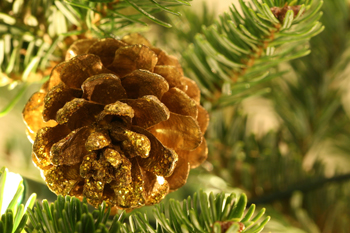 This ceremony is held in particular affection by the group with which I work, for it is also our “birthday”. To this day, I do not quite know why we selected this end-of-year ceremony to make our very first working – my memory vaguely reminds me we had been waiting forever to be sure we could go ahead, and then just dived in as soon as we got word. Whatever the reason, this factor introduces an additional level of celebration into proceedings.
This ceremony is held in particular affection by the group with which I work, for it is also our “birthday”. To this day, I do not quite know why we selected this end-of-year ceremony to make our very first working – my memory vaguely reminds me we had been waiting forever to be sure we could go ahead, and then just dived in as soon as we got word. Whatever the reason, this factor introduces an additional level of celebration into proceedings.
I remember our (somewhat frantic) last minute hunt for a Yule log. Since we had given up all hope of getting word before Lights we had made no preparations at all. We must have hunted through all the local woods before finally finding a dry, insect free and beautifully shaped chunk of wood gifted by an oak tree. Considering how rarely oak trees occur in woods in this locality - and most particularly those oak trees which will conveniently drop a branch into a rocky overhang that keeps it dry - clearly all our hunting was worthwhile. To this day that self-same log adorns the centre of our altar, surrounded with all things sparkly and pretty, and lit by many candles. These days one end of it is covered with dried rivulets of wax accumulated over the years of working, and the seasoned wood holds onto just a little bit more green scatter glitter every year.
Around the log itself are big sprigs of holly. I’m disappointed that I have not yet managed to grow a lady holly starred by scarlet red berries, but my male bushes supply us with glossy deep green leaves every year – then we have to try to beat the birds to a few berry-scattered boughs out in those selfsame woods. My own spruce supplies the boughs of fir which build the back of the altar. We also have some glass globes which nestle amid the greenery, and all is scattered with crimson twists of ribbon. So far we have always had to buy our mistletoe….but it HAS to be there. Naturally, there is also food…we do enjoy a good munch during reports!
Flowers here are usually substituted for a living poinsettia plant – which sadly STILL ends up as an offering to the Gods in its demise due to my inability to keep this vibrant plant going for more than a couple of months.
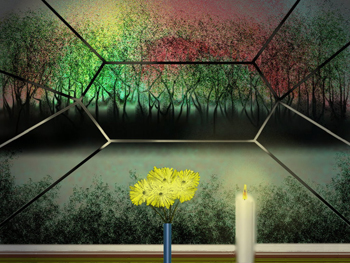 Incense is very particularly important too – a balanced mix of frankincense and myrrh is usually prepared just before the Solstice celebration, and stored for next year, whilst we burn the one we made earlier during the current ceremony. This incense has a couple of other ingredients, including wine and honey, and smells…..ah…like angel’s breath.
Incense is very particularly important too – a balanced mix of frankincense and myrrh is usually prepared just before the Solstice celebration, and stored for next year, whilst we burn the one we made earlier during the current ceremony. This incense has a couple of other ingredients, including wine and honey, and smells…..ah…like angel’s breath.
Another tradition for us is that we take one of the candles from the altar and leave it to burn out, set in a window, to guide the weary wanderer home to safety. This is something you could do too – but use proper safety procedures if you choose to.
One of the safest ways to let a candle burn out is to sit it in a heatproof bowl of water, still in its stick or holder, where the water level in the bowl itself will act as a dowse when the candle burns low enough. Do not do this in a regularly frequented room unless you are going to stay with the candle at all times (and I really mean “at all times” – candles always fall over when you nip to the bathroom, you know). Do not leave it anywhere it can be knocked or blown over. And do not leave it within reach of flammable materials.
The lack of logic in birthing our group during this ceremony becomes much more obvious when you contemplate the nature of this Celebration. It marks the Dark of the Year. The hours of daylight are at their most sparse, and darkness rules for many hours a day. The Winter Solstice also marks the beginning of a period of rest for those of our tradition. For over a Moon no workings take place at all, and we recharge our batteries as …ever so slowly….the light reclaims its ground. We do not officially re-awaken until Lights when we greet the New Year, and bless our safe passage through winter’s chill and threat. And through all of this we are sustained by the brightness and joy of the Celebration of the Winter Solstice.
You know one thing I always tend to consider at this time of year – mostly because I probably have far too much time on my hands – are the modern Wiccan rituals regarding the solar year. Many of these grew up based upon the research and writings of Gerald Gardener, the big daddy of Gardnerian Wicca. There are many many branches of Wicca these days, several of which eschew Gardner’s teachings. You see this reaction in science as well don’t you? People say “No, no, that person was completely wrong, and therefor I am not influenced at all by him/her.” But if you are convinced they were wrong, then surely you are influenced by them? Otherwise how would you know to believe they are wrong? It’s a puzzling conundrum, that one.
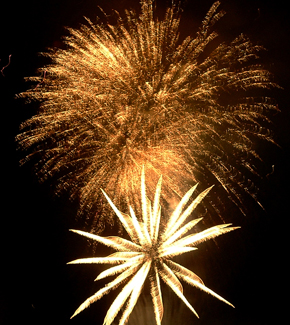 Anyhow…I consider the modern Wiccan tradition (that’s the tradition which has grown up over the last century or so) at this time of year primarily because Gardner saw the Solstices and Equinoxes as Lesser. For him, Imbolc, Beltane, Lughnasadh and Samhain were the “Greater” wheel festivals.
Anyhow…I consider the modern Wiccan tradition (that’s the tradition which has grown up over the last century or so) at this time of year primarily because Gardner saw the Solstices and Equinoxes as Lesser. For him, Imbolc, Beltane, Lughnasadh and Samhain were the “Greater” wheel festivals.
I find that approach confusing in truth. Just as I consider the concept of Samhain as New Year odd. In my heart, New Year is a time of hope and promise. It encapsulates the possibilities of the future. For me, Samhain is part of the “dying” year, hence the brief return of those gone beyond.
Yet ever I respect and revere those choices of belief made by my fellow man, and held in trust and faith – whether I understand them or not. Maybe those who hold Samhain as the start of things see my belief as weird. And if they do, I hope they view me in the same light as I view them.
When those of differing traditions, faiths, beliefs and sources of inspiration can each hold the other equally and respectfully holy, we have a world that wins for all of us. And that’s the world I want to live in.
Here are Graham's thoughts:
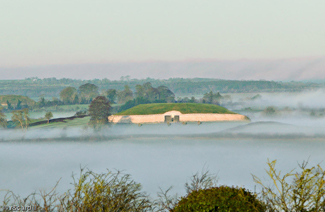 Winter Solstice is a well known Sabbat which has inspired the major religious and secular festival in our culture – Christmas. The Solstice usually occurs around the 21st of December and as with the Summer Solstice, the sun rises and sets in the same place on the horizon for five days. And, just as St John's Day is placed after the summer, so Christmas falls just after the Sun starts moving again.
Winter Solstice is a well known Sabbat which has inspired the major religious and secular festival in our culture – Christmas. The Solstice usually occurs around the 21st of December and as with the Summer Solstice, the sun rises and sets in the same place on the horizon for five days. And, just as St John's Day is placed after the summer, so Christmas falls just after the Sun starts moving again.
When analysed, Christmas proves to be as strange as Easter when it comes to the amalgam of Christian belief and pre-Christian customs. As I mentioned in the Summer Solstice article, there is a myth of the Holly and Oak Kings contending, and each ruling over half the year. The whole cycle of the two brothers could be a distillation of some earlier myth of a primeval spirit of the wild woods. Winter Solstice is the peak of the Holly King's power and this is reflected in much of the traditional decorations and even hymns for this time of year. Holly is an incredibly magical tree with many myths woven around it. There are tales of giants wielding clubs made out of whole Holly trees.
Many prehistoric monuments across Britain and Ireland have very clear alignments of sunrise or sunset at certain dates of the year. Of all the eight sabbats, the Winter Solstice is the one with the most surviving prehistoric monuments, and these sites tend to be the most impressive. Despite the common association of Stonehenge and the Summer Solstice sunrise, Stonehenge is more likely to be built around the Winter Solstice sunset.
Newgrange in Ireland, which aligns to the sunrise on Winter Solstice, is an artificial hill made of layers of pebbles and earth. It covers over an acre and is around 40 feet high. It has one 60 foot long corridor leading into a chamber which is only illuminated at dawn on the five days of the solstice. It is an incredible feat of engineering carried out 5,000 years ago – 500 years before either Stonehenge or the Pyramids were built. There are other similar monuments across Ireland, Scotland and Wales.
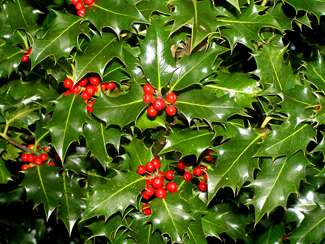 It used to be said that the Winter Solstice was so important because early man was afraid that the sun wouldn't return. But I've always thought they must have been certain of the patterns of the sun in order to commit so many resources to building huge monuments marking the Solstice. I think it was important to them because it is the darkest time of the year, and the peak of the Holly King's powers. There are more months of winter ahead. But, this day symbolises that from now on the days get longer. At first it’s not even visible, but with every passing day, the Oak King gets stronger and gradually takes over from his brother.
It used to be said that the Winter Solstice was so important because early man was afraid that the sun wouldn't return. But I've always thought they must have been certain of the patterns of the sun in order to commit so many resources to building huge monuments marking the Solstice. I think it was important to them because it is the darkest time of the year, and the peak of the Holly King's powers. There are more months of winter ahead. But, this day symbolises that from now on the days get longer. At first it’s not even visible, but with every passing day, the Oak King gets stronger and gradually takes over from his brother.
Every culture or religion that has come to the British Isles has some form of winter festival. For example, Chanukkah was a minor Jewish festival but in the UK it has become more important. It has many attributes of Winter Solstice – a focus on lights, feasting and gift giving. I think this is because the northern latitude means that we get short days and bad weather and we need a party to raise spirits and help us through the darkness.
There is so much lore around bringing greenery into the house and how to decorate and to feast. One fact I particularly like is that when they excavated Durrington Walls, a neolithic village near Stonehenge, they found thousands of pig bones. From the size of the bones, all the pigs were around 9 months old so they would have been killed towards the end of December. So, our tradition of having a Christmas ham could well be at least 5,000 years old.
As I've said before, this would have been an important time for gathering the family together, exchanging news, making sure that everyone was OK. Although they are maligned, the round robin letters that go with the Christmas cards are just a modern version of a very ancient idea. Likewise having a big meal where everyone eats together, many generations overlapping, feels very ancient to me too.
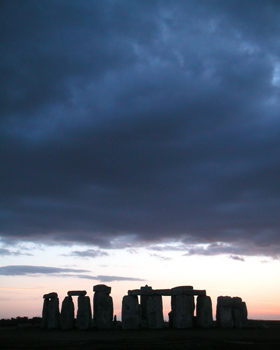 I should point out though, that the idea of Christmas has waxed and waned throughout history, and the current “goodwill to all men” version only really surfaced about 170 years ago. In our house we tend to celebrate as if it were Christmas without the nativity and a few days early! We have a ham as that is a very ancient tradition, and I have been down to visit Stonehenge for the sunrise and sunset. The argument for this being the main alignment is that there is an avenue that leads from the river Avon up to Stonehenge. If you stand on this avenue at sunset on the solstice, the sun sets in the middle of the stones. (This feels more natural than being inside the stones at summer solstice and looking back along the avenue to the sunrise.)
I should point out though, that the idea of Christmas has waxed and waned throughout history, and the current “goodwill to all men” version only really surfaced about 170 years ago. In our house we tend to celebrate as if it were Christmas without the nativity and a few days early! We have a ham as that is a very ancient tradition, and I have been down to visit Stonehenge for the sunrise and sunset. The argument for this being the main alignment is that there is an avenue that leads from the river Avon up to Stonehenge. If you stand on this avenue at sunset on the solstice, the sun sets in the middle of the stones. (This feels more natural than being inside the stones at summer solstice and looking back along the avenue to the sunrise.)
In terms of colours and decorations, we go for dark greens, reds, golds – in short anything bright that is likely to lift the spirits. I try to get out and collect greenery – particularly holly and ivy. I've already discussed the significance of Holly, and Ivy can be taken to represent the Goddess. Also, fir, whether in boughs or as a Christmas tree, is important because it stays green across the winter. All these plants are seen as holding life in trust while all around is sleeping.
The hardest thing I find in celebrating the Winter Solstice in the modern world is that I see it as one of eight equally important seasonal festivals. In my mind it should rank the same as Lammas and Imbolc. But in the modern world it has become a huge, commercial monster, dominating media and consumer culture from October onwards. So, in our house, despite the fact we have children, we try to rein things in a bit, while still celebrating and feeling the joy that the festival brings.
